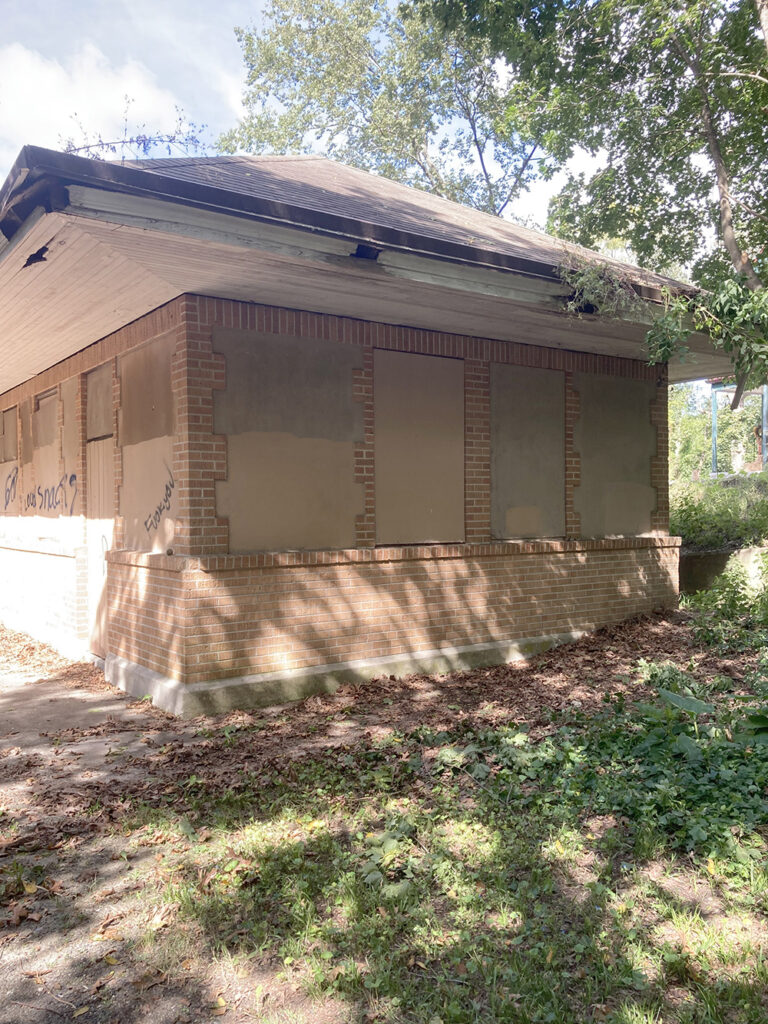An interview with local author Mari D’Albora Dattolo
By Cindy Christy Fertsch
What first sparked your interest in this tragedy of 1880?
Approximately five years ago, I discovered an abandoned train station off Main Street on Taylor Avenue in Mays Landing. The following year I was coordinating the Annual Ghost Walk for Halloween. I wanted to include the station and reenact a train wreck. What I didn’t know at the time was that a collision had actually occurred there and it was much more severe than anyone in our (century) realized. My journey of discovery began in the form of a newspaper article from the New York Times the day following the collision, mentioning three fatalities. I found that the railbed existed in several areas, including outside of Funny Farm Animal Sanctuary on Railroad Boulevard and the course of Bikeway East on West Jersey Avenue. I was consumed with the story from then on.
Given the magnitude of the train wreck and casualties, why do you think it did not gain greater press coverage?
Studying the connection from the records in the state archives to court records of the inquests, lead me to coin the phrase:
“When the rails ruled the roads and class determined privilege”.
This was America in the Second Industrial Age, also known as the Technological Revolution. Transportation and communication systems were coming into development, and factories provided the necessary workforce at minimal cost. These prominent (industrialist) owners of the late 19th century could be ruthless in their business practices. Sadly, their influence also had power over the Press; how much information they chose to release and whether they elected to fully disclose details of the events.
What was life like in Mays Landing in the 1880s? Is it true the number of casualties/injured was greater than the entire population of Mays Landing? Were there first responders? Did the residents become the first responders?
In 1880, Mays Landing was a small village. Prior to 1865, their principal livelihood was farming and maritime trading. In 1837 Mays Landing was established as Atlantic County’s center of government.
Following the Civil War, The Mays Landing Water Power Company cotton mill joined the county government as a powerful force in the community. When the mill opened it immediately became the town’s largest employer, providing work for roughly a quarter of the town’s residents. By the late 1880s, the plant employed over 200 men, women and children, a figure that rose to approximately 300 throughout the 1890s.
When the railroad spur from Newfield was added in June of 1880, it’s purpose was twofold. Excursion trips were chartered from the city to the shore and the cotton mill, owned by the same company, would have the capability of moving their products more expeditiously to their destinations.Today remnants of the loading dock still remain on a abandoned lot across from the Mays Landing Firehouse.
The tragedy itself occurred the seventh week in operation on August 11, 1880. Two trains carrying upwards of 1300+ passengers from Philadelphia collided over the trestle bridge in Mays Landing.
It was during a severe summer storm as the two were slowly following each other on a single track to the ½ mile long siding on the opposite side of the Great Egg Harbor River. The population of the town nearly equaled the number of travelers that were then stranded following the mishap. The entire town came out with a spirit of hospitality and urgency to assist their stranded city neighbors. The villagers opened their homes, providing shelter, blankets, first aid care and emergency services. The Mays Landing Fire Department would not be established until 1894.
The severity of the emergency became clear with the first casualty, James Sweeney. He had been on the back platform on the first train when he was crushed by the second locomotive.
More fatalities ensued, most from the scalding steam of the locomotive with temperatures upwards of 200 degrees.
Logistically, in your opinion, was the Pennsylvania Railroad at fault? What changed to ensure it did not reoccur?
The designation of ‘Historical Narrative’ provides the writer creative license while presenting the facts. It keeps the conclusion open ended, leaving the interpretation of the events up to the reader’s imagination. That said, the West Jersey Rail Line was a subsidiary of the Pennsylvania Railroad (PRR). No one living today bore witness to the divisions of the operation in 1880. My personal interpretation is: (1) The line was inadequately prepared to meet the June 16th deadline for the formal opening of Atlantic CIty; (2) The engineer had not been properly schooled in the use of the new airbrakes prior to this excursion (3) The trains were running too closely together and both were over occupancy limits, ignoring the rules of the road (4) Public relations were handled poorly in regard to the media with a lack of sensitivity pertaining to loss of life and permanent disfigurement. (5) No signage has ever been erected at the site of this incident.
Additionally, this scenario was similarly repeated again in Atlantic City in 1896 with a boiler explosion resulting in 50 fatalities. Later in 1906, a third major wreck on the West Jersey’s approach to Atlantic City’s newly constructed drawbridge resulted in the drowning of fifty three passengers.

Historically, why is it important to read your book?
This is the first single publication dedicated entirely to this tragic event. This was a story that was never expected to be unearthed. Discovering the details to this buried treasure reflects years of research, consultation with experts and an adventurous spirit. I consider it a privilege to share this historic discovery with future generations of South Jersey and Philadelphian families.
This has been called the “Titanic of South Jersey”…would you agree with that?
That would be a fair analogy. Like the steerage level for third class passengers on the Titanic, most of these travelers were Irish immigrants with little means. They depended on the staff to provide them with a safe passage, but due to the negligent decisions of those in command, many met with a horrific end. What is very different between these two events is the lack of awareness. I have made it my mission to see that this event gets the acknowledgement that has been long overdue.
What is now at the site of the train wreck?

Currently an abandoned train station, built years later, still stands empty. Remnants of the trestle bridge support continue to jut out over the Great Egg Harbor River. But little else indicates there was ever such a tragedy that befell this Mays Landing community, one stormy summer night-somewhere between the Shore and the City.






